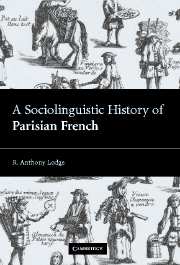Book contents
- Frontmatter
- Contents
- List of maps
- List of tables
- List of figures
- Acknowledgments
- List of phonetic symbols
- Part 1 Preliminaries
- Part 2 The pre-industrial city
- Part 3 The proto-industrial city
- Part 4 The industrial city
- 10 Industrial growth, 1750–1950
- 11 Standardisation and dialect-levelling
- 12 Lexical variation
- Conclusion
- Appendix Literary imitations of low-class speech
- Bibliography
- Index
10 - Industrial growth, 1750–1950
Published online by Cambridge University Press: 22 September 2009
- Frontmatter
- Contents
- List of maps
- List of tables
- List of figures
- Acknowledgments
- List of phonetic symbols
- Part 1 Preliminaries
- Part 2 The pre-industrial city
- Part 3 The proto-industrial city
- Part 4 The industrial city
- 10 Industrial growth, 1750–1950
- 11 Standardisation and dialect-levelling
- 12 Lexical variation
- Conclusion
- Appendix Literary imitations of low-class speech
- Bibliography
- Index
Summary
The onset of industrialisation in the late eighteenth century introduced changes to the urban landscape of Europe which were unprecedented in scale, and less reversible than all previous ones had been. In those industrial cities that mushroomed out of small townships, like Manchester, Saint Etienne, Dortmund, new urban varieties arose as modified forms of their hinterland dialect, with the standard language being ‘parachuted in’ from outside. In long-established metropolises like London and Paris, urban dialect and standard language already coexisted within the community, so the effect of industrial growth was to realign the varieties in circulation, through an extension in the distribution and functional range of the standard language, and a radical modification of vernacular speech through dialect-levelling. We might expect the effect of standardisation and levelling to be to reduce dialect differences. However, when we look at Parisian speech at the beginning of the twentieth century, it is clear that industrialisation did not produce linguistic homogeneity. Urban speech varieties, as they evolve in the course of time, do not show a noticeable tendency to converge. Changes take place, but not such as to eliminate the differences (see Halliday 1978: 158).
In Part 4 we will begin by looking at the socio-demographic development of the industrial city up to the middle of the twentieth century (Chapter 10).
- Type
- Chapter
- Information
- A Sociolinguistic History of Parisian French , pp. 193 - 204Publisher: Cambridge University PressPrint publication year: 2004

